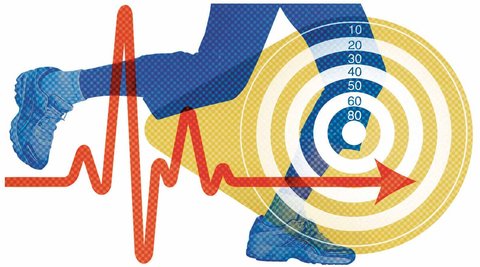Heart Rate Training for Endurance Athletes
Education, March 20, 2020
Calculating and understanding your optimal heart rate training zones for training and race-day performance improvement.

For every athlete, which includes YOU, there is a requirement to ensure you utilise some form of measuring your exercise intensity! Better yet is to use more than one method. Rate of perceived exertion (RPE) is probably the most widely used but sometime miss used and misunderstood. Effectively RPE is your own perception of intensity and how you are feeling whilst exercising. Another tool to use which is both very effective and accessible to everyone is your heart rate focusing on heart rate zones or percentage of beats per minute at various training intensity levels.
A heart rate zone is the range that’s used as a guide to maintain your training intensity level throughout your endurance exercise session. You will need a 'smart' watch with heart rate capability or specific Heart Rate (HR) Monitor to keep check on your HR throughout the session. Most watches and HR monitors will provide you with the ability to 'download' your training data for more analysis too (e.g., Strava). Establishing your Maximum Heart Rate (MHR) will support the use of your heart rate training zones and is also detailed below. Finally, for cycling you can also use a metric called FTP or Functional Threshold Power which is established using a cycle power meter and an FTP test protocol. Zones for FTP also relate to HR zones both detailed below.
Each zone, however calculated, carries its own training benefit (e.g., increase aerobic capacity, lactate tolerance, recovery, etc.) at the various phases of an endurance training and racing program. In preparation for race day, your training will involve different workouts and exercises to improve aerobic and anaerobic capacity such as recovery, steady paced intervals, speed intervals or hill climbs or long slow distance workouts.
TNBcoaching.com can provide support in establishing your individual Heart Rate Zones based on field test data. Contact us for further information on how.
| Zone | Description | FTP for cycle | Capacity of MHR | RPE | Intensity & Exercise Example |
|---|---|---|---|---|---|
| Zone 1 | Active Recovery | 56-75% | 50-60% | 3 to 4 | Easy. ‘Coffee’ ride or run. Conversational pace. |
| Zone 2 | Aerobic | 76-90% | 60-70% | 4 to 5 | Moderate. Swim leg or steady running on flat surfaces. Still just ‘talking’ pace but manageable. |
| Zone 3 | Tempo | 91-105 | 70-80% | 6 to 7 | Very challenging. Quick burst to shake off other competitors or ‘sprint’ race pace. |
| Zone 4 | Threshold | 106-120 | 80-90% | 8 to 9 | Fast. Run or cycle hill climbing or time trail pace. |
| Zone 5 | Red Line | >121% | 90-100% | 10 | Flat out. All out fast for very limited time |
A simple and the most used method to calculate your MaxHR zone for endurance training is:
220 less your age (e.g. You are 30 years old. 220 - 30 = 190 MHR, so your Zone 3 would be 172 - 180)
A more accurate method is to perform a laboratory stress test or ‘field’ test under supervised conditions*. There are also 'smart' watches and Apps that will provide reasonably accurate but still estimated heart rate zone information for you too.
To calculate Maximum and LTHR training zones.
TNBcoaching.com can provide support in establishing individual Heart Rate Zones based on field test data. Alternatively, to find your [running and/or cycle] zones do a 30-minute time trial all by yourself (15-20-minute warm-up, flat course, no training partners and not in a race). Again, it should be done as if it was a race for the entire 30 minutes. But at 10 minutes into the test click the lap button on your heart rate monitor. When done look to see what your average heart rate was for the last 20 minutes. That number approximates your LTHR whilst the peak HR will provide a usable approximate of your MaxHR. This can be completed a second time (using the same location and as near as possible environmental conditions to confirm these numbers.
Using HR Zones is extremely useful to ensure you are 'targeting' the correct exercise intensity however your HR can be impacted by extreme weather (e.g. high heat and/or humidity), poor hydration, illness or fatigue. As a result it is always useful to utilise other 'tools' to gauge or 'target' your training intensity, such as Perceived Exertion (i.e. how you 'feel' on a sliding scale between 1 and 10 where 10 would equal Zone 4), Cycle Power (FPT) and/or Oxygen Saturation levels.
Confused yet?! Sorry however there is just one more variable for endurance athletes. There can be a discrepancy between your swim, cycle and run HR ranges due to the position of the body and major muscle groups that are engaged during the exercise. As a guide your cycle heart rate will likely be 2-4% lower in all zones apart from Zone 5 than running. Swim HR zones are problematic to assess.
*Note: There are HR Zones at/above 100% which are typically absolute maximal efforts for very short periods (below 20 seconds) which endurance athletes typically never need to reach unless undertaking Vo2 Max or Max Heart Rate testing in a laboratory.
